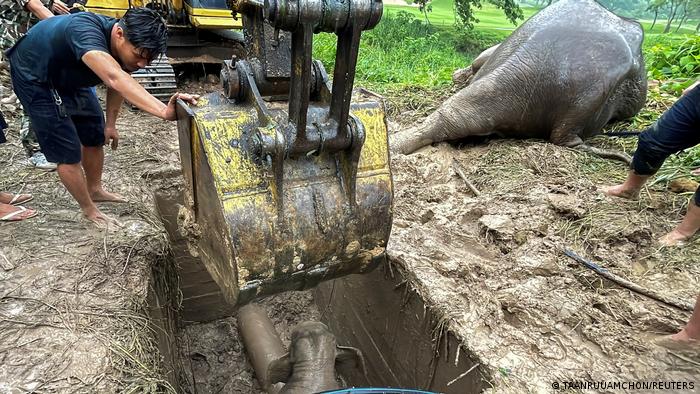Edited by Amal Udawatta
The baby elephant was traveling with its mother as part of a jungle herd that was passing by when it fell into a manhole. The mother elephant nearly died during the rescue.
The incident took place in Thailand's Nakhon Nayok province
Wildlife rescuers in Thailand on Wednesday saved a pair of elephants, a mom and her baby, after they both fell into a manhole.
The incident took place on the outskirts of the Royal Hills golf course in Thailand's Nakhon Nayok province. A passerby noticed that the baby elephant had fallen into the manhole and alerted wildlife authorities and Khao Yai National Park authorities.
As the calf fell into the drainage, its mother became distressed and stood to watch while her baby struggled to emerge from the hole.
Rescuers began efforts to lift the 1-year-old baby elephant but they could not proceed due to the presence of the anxious mother.
Mother elephant resuscitated
A tranquilizer was ultimately applied on the older elephant, in an effort to stabilize her so the rescue could continue. But as a result, the mother elephant tumbled partially into the hole as well.
Rescuers went all-in to help the mother and baby simultaneously. One group used a truck-mounted boom lift to pull the mother out, while a digger cleared away earth to allow the anxious calf to climb out from the slippery mud.
Several rescuers had to perform cardiopulmonary resuscitation on the mother, ultimately saving her life, just as the calf emerged from the hole and was reunited with her.
The pair are believed to belong to an elephant herd that was traveling through the nearby jungle. Park authorities confirmed that after the rescue, the two returned safely to the jungle.
jcg/fb (AFP, Reuters)



Comments
Post a Comment